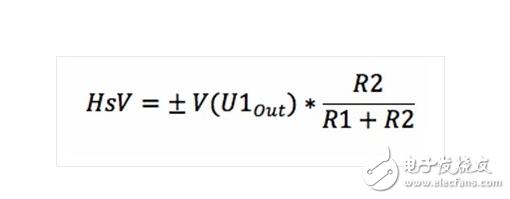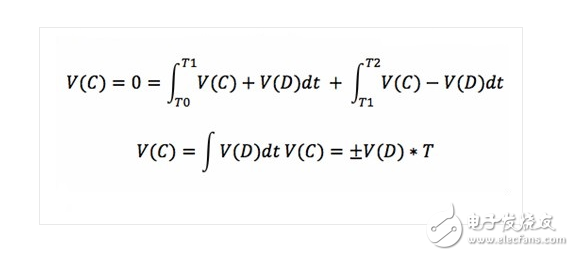This design example avoids the RC charging waveform of the standard relaxation oscillator and replaces it with a linear rising/falling triangular wave. Positive feedback is used in the example to increase the charge rate per half cycle and straighten the curve. The oscillator consists of a Schmitt trigger comparator U1 and an in-phase adder U2. Oscillation is achieved by the same driving principle as driving the relaxation oscillator, flipping the comparator output when the capacitor voltage reaches the hysteresis threshold. This hysteresis voltage HsV is dependent on the R1 and R2 values ​​in the positive feedback loop of the comparator. The hysteresis sets the amplitude of the triangular wave on C1. The comparator output is a triangular wave whose amplitude depends on the output stage signal of U1. This signal is attenuated by R3 and R4 before the adder, otherwise the triangle will return to the RC curve. Since V(D) must be stable, the values ​​of R3 and R4 are as low as a fraction of the peripheral resistance; R3+R4 is the main load of the comparator. A small resistance (here 1kΩ) is recommended, which is comparable to an acceptable U1 output load, but all values ​​can be scaled up. The U2 adder adds V(D) and the capacitor voltage V(C) together and multiplies the gain 2 defined by R7 and R8. Its output charges C1 through R9. When V(D) is ±1â„2 V (U1Out), the capacitor voltage will appear as a straight line with a linear slope, which in turn forms a triangular wave. The input resistors R5 and R6 of the adder divide the two voltages by two. The Barkhausen stability criterion requires unity gain to complete the oscillation, so the adder gain must recover this loss: If R5=R6 and R7=R8, then Vout = V(C) + V(D). The accumulation process can be described as two time functions: one from T0 to T1, where V(D) is a positive value, so V(C)T0 = -HsV, V(C)T1 = +HsV; the other from T1 to T2, the process is the opposite: since V(D) is a negative value, V(C)T2 = -HsV. Each integer part must be zero because there is no DC offset. Solve the equation, where V(C) is initially 0 and V(D) is flipped between positive and negative: The optimal solution for V(C) is a linear function of V(D) and time. When V(C) reaches ±HsV, V(D) will flip between positive and negative. If V(D) increases, the frequency also increases. The slew rate of the op amp limits the frequency of this application. The comparator output must maintain a square wave shape, so the minimum period can be defined by the total offset and factor 10: At this maximum frequency point, the adder output current through R9 and C1 must be driven by the op amp. If necessary, calculate the RC impedance and the value of C1 - in this case, to meet the total requirement of 2kΩ: R9 = 1kΩ, XC = 1kΩ. The output frequency is equal to: The duty cycle can be adjusted by adding a DC component to V(D) through R4. The available adjustment range is approximately 10%-90%. Disposable Grasper,Percutaneous Lumbar Discectomy,Percutaneous Laser Discectomy,Percutaneous Endoscopic Discectomy Dragon Crown Medical Co., Ltd. , https://www.dragoncrownmed.com







